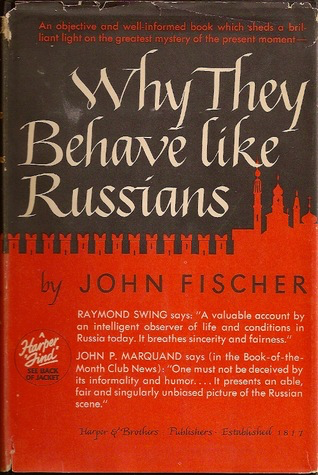I’ve just finished my 400th book since I started tracking such data back in June of 2015. The book which saw me cross this fictional milestone was an interesting look at the Soviet Union just after World War II, Why They Behave Like Russians, written by John Fischer and published in 1947. Fischer visited the Ukraine in 1946 as an official of UNRRA (the United Nations Relief and Recovery Administration), and had some nice insights into the young Communist state—not yet 30 years old at the time of his visit—which were apparently quite controversial at the time, but which have been seasoned somewhat by the threescore and twelve years since. (I recommend reading political books, or books on so-called ‘current events’, many years after their publication; they then seem either sage or silly, and are consequently much more enjoyable.)
Completing this book means that I have read another hundred books* since the last such milestone reached on March 26, 2019. Thus almost 300 days (more precisely: 297) have elapsed since I read my 300th book since I started my meaningless tracking project. On average, therefore, I read one book every 2.97 days during this last century of books. This is a slight increase from the 2.79 days to read books #201-300. (The average for the first hundred books was 4.83; that for the second hundred was 6.17.)
1 Book per 2.97 Days
As usual, I’ll be back with more detailed analysis after I have a chance to massage the data into me-friendly form. As well, of course, I’ll be posting a listing of the last set of books read.
*As usual, I exclude comic books and their ilk from my calculations.
(My copy of Why They Behave Like Russians does not have a dust jacket. Indeed, upon closer examination I can see the telltale indentation on the back which shows this to be a book club edition. So here’s a picture of the original book dust jacket, grabbed from Goodreads, for those of you who like images. Quite frankly, however, the sans serif font used for the title page and chapter headings is much more attractive than the calligraphic font used here on the original cover.)


Leave a comment